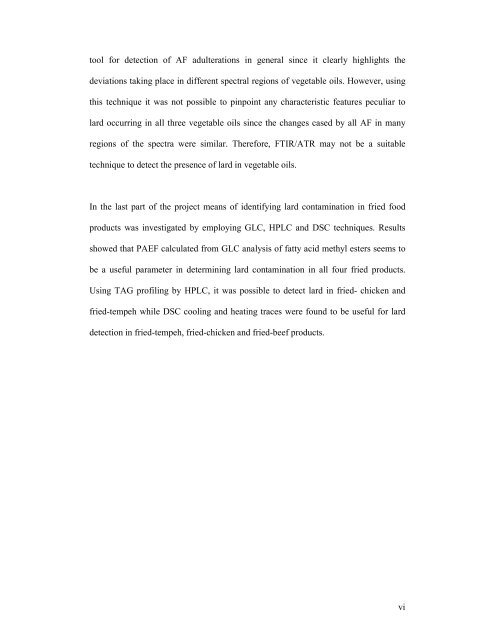DETECTION OF LARD AND INTERESTERIFIED LARD AS ...
DETECTION OF LARD AND INTERESTERIFIED LARD AS ...
DETECTION OF LARD AND INTERESTERIFIED LARD AS ...
Create successful ePaper yourself
Turn your PDF publications into a flip-book with our unique Google optimized e-Paper software.
tool for detection of AF adulterations in general since it clearly highlights the<br />
deviations taking place in different spectral regions of vegetable oils. However, using<br />
this technique it was not possible to pinpoint any characteristic features peculiar to<br />
lard occurring in all three vegetable oils since the changes cased by all AF in many<br />
regions of the spectra were similar. Therefore, FTIR/ATR may not be a suitable<br />
technique to detect the presence of lard in vegetable oils.<br />
In the last part of the project means of identifying lard contamination in fried food<br />
products was investigated by employing GLC, HPLC and DSC techniques. Results<br />
showed that PAEF calculated from GLC analysis of fatty acid methyl esters seems to<br />
be a useful parameter in determining lard contamination in all four fried products.<br />
Using TAG profiling by HPLC, it was possible to detect lard in fried- chicken and<br />
fried-tempeh while DSC cooling and heating traces were found to be useful for lard<br />
detection in fried-tempeh, fried-chicken and fried-beef products.<br />
vi
















